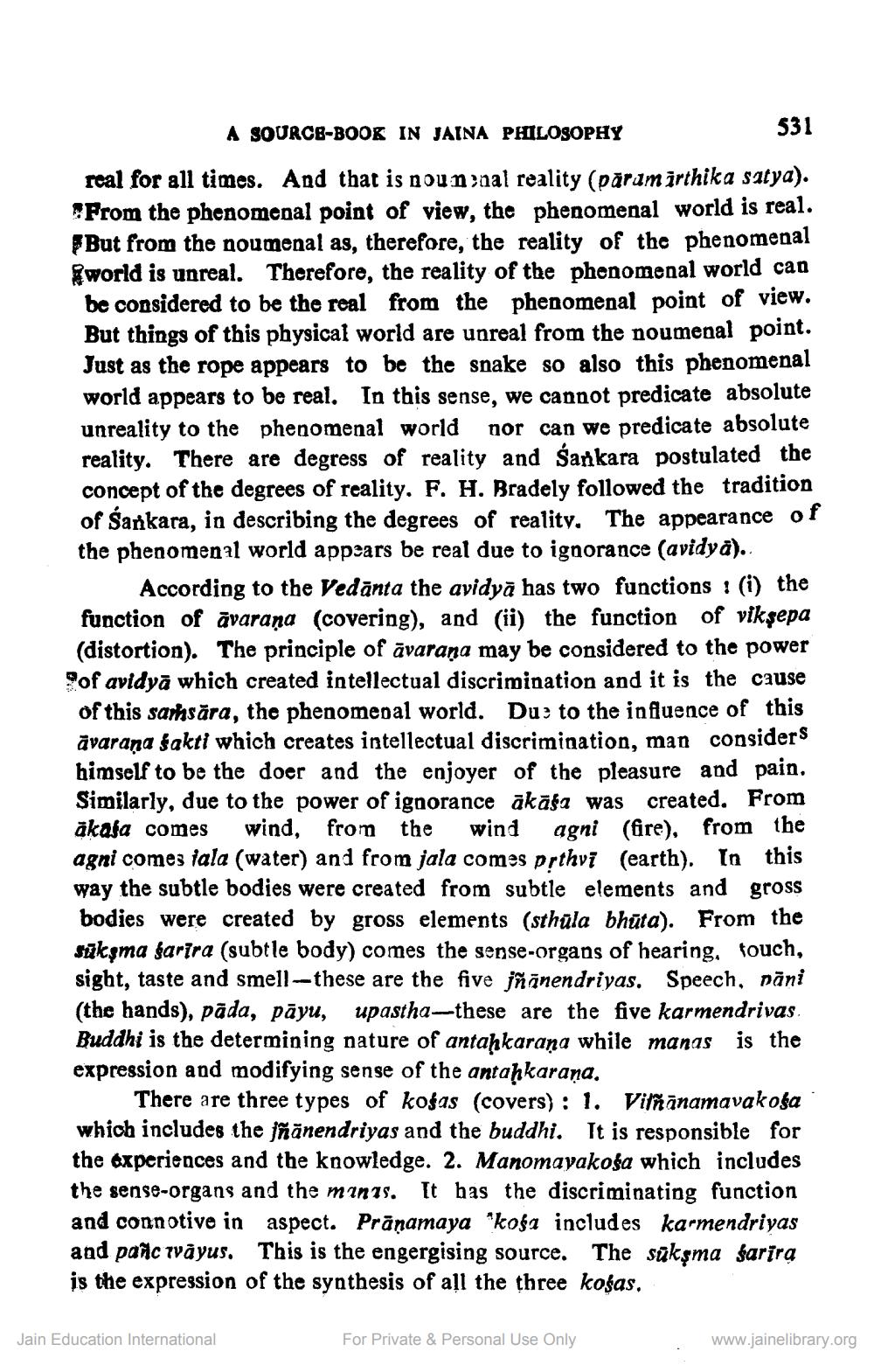________________
A SOURCB-BOOK IN JAINA PHILOSOPHY
531
real for all times. And that is noun nal reality (päram irthika satya). From the phenomenal point of view, the phenomenal world is real. But from the noumenal as, therefore, the reality of the phenomenal world is unreal. Therefore, the reality of the phenomenal world can be considered to be the real from the phenomenal point of view. But things of this physical world are unreal from the noumenal point. Just as the rope appears to be the snake so also this phenomenal world appears to be real. In this sense, we cannot predicate absolute unreality to the phenomenal world nor can we predicate absolute reality. There are degress of reality and Sankara postulated the concept of the degrees of reality. F. H. Bradely followed the tradition of Sankara, in describing the degrees of reality. The appearance of the phenomenal world appears be real due to ignorance (avidya).
According to the Vedānta the avidyā has two functions : (i) the function of āvarana (covering), and (ii) the function of viksepa (distortion). The principle of avarana may be considered to the power of avidyā which created intellectual discrimination and it is the cause of this samhsāra, the phenomeoal world. Due to the influence of this avarana sakti which creates intellectual discrimination, man considers himself to be the doer and the enjoyer of the pleasure and pain. Similarly, due to the power of ignorance ākāśa was created. From akaba comes wind, from the wind agni (fire), from the agni comes iala (water) and from jala comes prthvi (earth). In this way the subtle bodies were created from subtle elements and gross bodies were created by gross elements (sthula bhūta). From the sūksma sarira (subtle body) comes the sense-organs of hearing, touch, sight, taste and smell -- these are the five jñanendriyas. Speech, Dāni (the hands), pāda, pāyu, upastha-these are the five karmendrivas. Buddhi is the determining nature of antahkarana while manas is the expression and modifying sense of the antahkarana.
There are three types of kogas (covers): 1. Vilnānamavakoga which includes the jñānendriyas and the buddhi. It is responsible for the experiences and the knowledge. 2. Manomayakosa which includes the sense-organs and the minis. It has the discriminating function and connotive in aspect. Prānamaya "koga includes karmendriyas and panic ovayus. This is the engergising source. The sūksma sarira is the expression of the synthesis of all the three košas.
Jain Education International
For Private & Personal Use Only
www.jainelibrary.org




